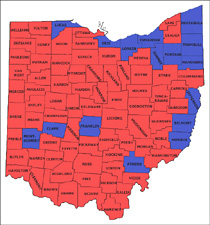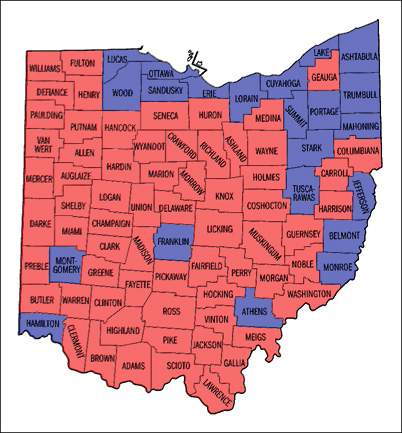Ohio likely saw more independent activity
by various groups than any other state. America Votes,
the coalition of progressive groups operating in 14 states, was
particularly well organized in Ohio. State director Scott Nunnery
had started in 2004 and continued to build the coalition through 2006
and 2008. Nunnery noted several challenges faced by independent
groups in 2008. "The protracted primary made it really difficult
to plan," he said, and "the appeal and popularity of the Obama campaign
made it difficult for groups to recruit volunteers." All told 78
local, state and national groups participated in the America Votes
"table" in Ohio in 2008, including 46 core participants. America
Votes
had 20 staff and six offices and reported its coalition partners made
10.7
million contacts (>) and spent more than $45 million (this
figure does not include broadcast media, but does take into account the
fact the America Votes partners worked the entire ballot, including,
for example, a successful independent coordinated campaign that focused
on state House races).
Working America, the community
affiliate of the AFL-CIO, was likewise active on the ground. On a
more modest scale, Vote
Today
Ohio, a PAC which raised money through ActBlue, rented vans and
shuttled voters from college campuses and urban areas to early voting
centers (>).
By
contrast there was scant evidence of a conservative ground game.
Jack Gruber, chairman of the Family First PAC (based in Lebanon, OH),
observed in his group's Spring 2009 newsletter:
|
 |
|

Ads from:
AFSCME (USA Today - Oct. 21,
2008);
FRC Action PAC (eight Ohio newspapers - Nov. 3, 2008).
|




